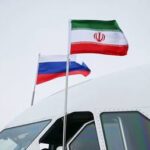Energy News Beat
ENB Pub Note: Why is this story from Tsvetana Parsskova from Oilprice.com important? Iran first learned, then developed ways to survive United States sanctions, and was an early adopter in the Dark Fleet, also known as the Shadow Fleet. Russia then built upon the success Iran had achieved with the shadow fleet and expanded it to its current size. It is also worth noting that OPEC+ as an organization has struggled to maintain production within the agreed-upon targets, and Saudi Arabia has often had to take cuts, even when it did not want to, in order to meet the group’s production quotas. It raises questions about the global pricing matrices for oil. Can OPEC and OPEC+ maintain the $80 to $85 range that it appears the Saudi Arabian Kingdom needs to fund it’s massive budgets?
OPEC+ members have overproduced by a cumulative 4.57 million barrels per day (bpd), with plans to compensate for this excess by June 2026. This overproduction has been led by countries like Kazakhstan, Iraq, and Russia, with Kazakhstan notably exceeding its quota by 390,000 bpd in March 2025, producing 1.852 million bpd against a target of 1.468 million bpd. The group’s compensation plan involves significant cuts between May and October 2025, with monthly reductions ranging from 189,000 to 435,000 bpd, though full compliance remains challenging due to persistent quota violations.
What does this mean for United States Investors? We will be covering this in several stories this week.
Iran and Russia are enhancing further their energy cooperation as Russian companies signed a deal to develop oilfields in Iran and the countries discuss the creation of a natural gas hub in the Islamic Republic.
Iran’s Oil Minister Mohsen Paknejad is currently on a visit to Moscow, where the two countries that are under U.S. sanctions committed to increase their cooperation.
Early this year, Iran and Russia signed a so-called Comprehensive Strategic Partnership Treaty, which included – among various other commitments – a pledge to expand cooperation in the energy sector, including in energy supply and swap operations.
Russia and Iran have been deepening their cooperation, including in the energy sector, for years, and especially after the Russian invasion of Ukraine cut off a lot of Moscow’s previous oil and gas customers.
Paknejad’s visit to Moscow this week comes as the two counties seek to forge deeper cooperation in the finance and banking sectors, too.
During the visit, Iran finalized four agreements with Russian companies to develop seven oilfields in Iran, the minister said. The deals are worth a total investment of about $4 billion, Iranian media quoted Paknejad as saying.
Russia and Iran also signed several memorandums of understanding (MoUs) in the oil and gas sector that could be finalized into contracts in the future. Teams of expert from both countries are negotiating the details of these possible new oil and gas contracts, Paknejad said.
In addition, Russia and Iran are holding talks on potential imports of natural gas from Russia, which could be followed by gas swaps and transit to other countries, according to the Iranian official.
Iran and Russia will also aim to double their annual bilateral trade to $10 billion, the Iranian minister added.
“The potential for trade between Iran and Russia is far greater than the current $5 billion level,” Paknejad was quoted as saying.
By Tsvetana Paraskova for Oilprice.com
The post Russia and Iran Deepen Energy Cooperation appeared first on Energy News Beat.









